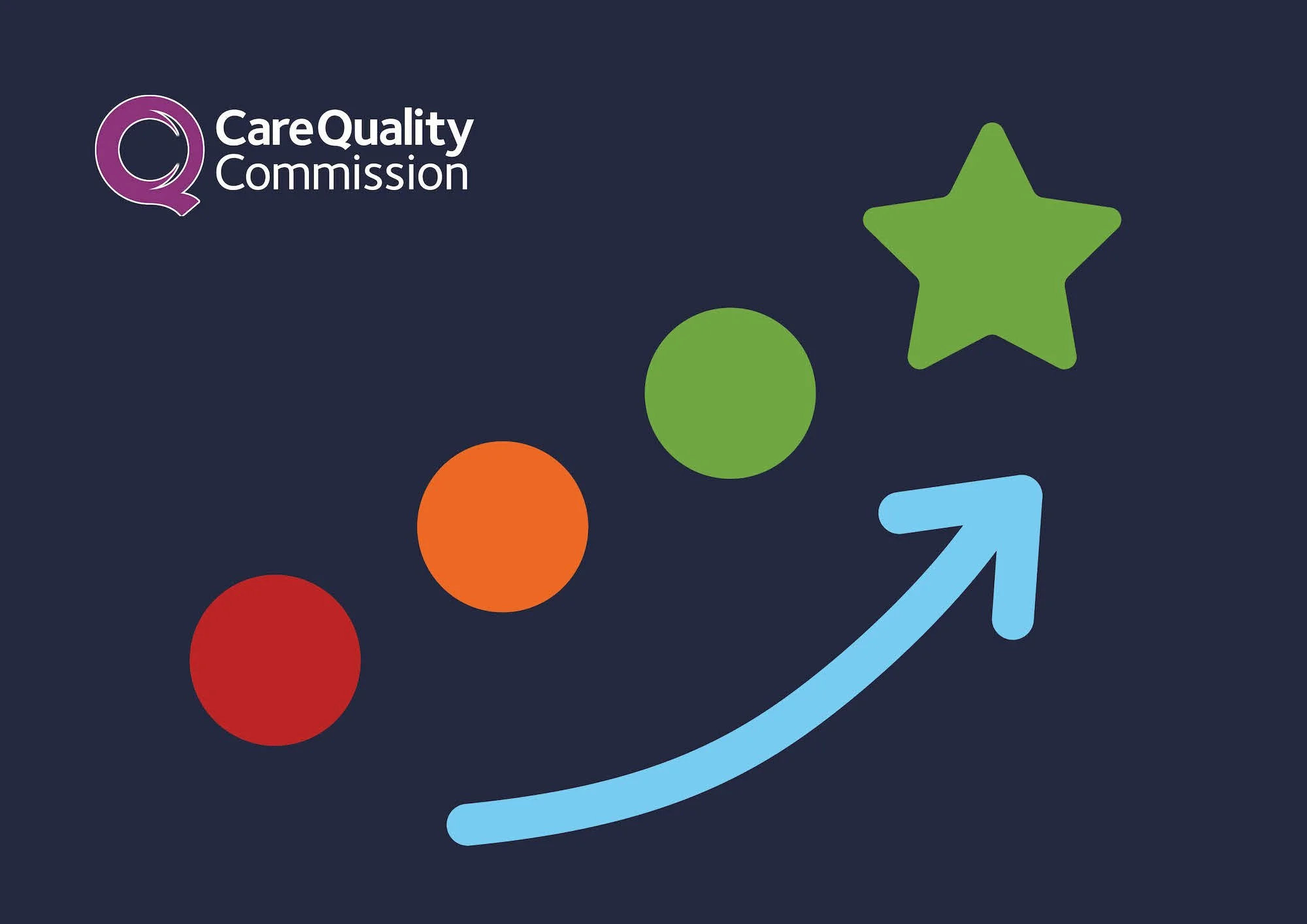How to Improve Your CQC Rating
If you were disappointed with your latest CQC rating, rest assured that you’re not alone and that improvement is absolutely possible.
Many care homes across the UK have improved their ratings by taking consistent, targeted action.
Your CQC rating is more than just a report card. It affects your reputation, occupancy levels, staff morale and even local authority referrals. Although a lower rating can be daunting, every ‘Good’ or ‘Outstanding’ care home started somewhere.
This guide will walk you through five proven strategies that can help you raise your rating and, more importantly, provide even better care for your residents.
Why Your CQC Rating Matters
CQC ratings are the gold standard for care quality in the UK. They are closely monitored by families, commissioners and staff.
A strong rating builds trust and confidence. It makes recruitment easier and attracts referrals. However, improving your rating is not just about ticking boxes; it's about creating safer, happier environments where both residents and staff can thrive.
1. Conduct Regular Self-Assessments
Think of self-assessments as an early warning system. Don't wait for inspectors to identify issues. Identify and resolve them first. Create a CQC-based checklist that covers the five key questions: Is your service safe, effective, caring, responsive and well-led?
Review different areas each month and include frontline staff as well as managers in the process. They often notice things that others overlook.
It is also worth arranging an external mock inspection once or twice a year. A fresh pair of eyes can help you to identify any blind spots.
When you identify issues, make a record of them, set deadlines and track your progress. Honesty and transparency are what drive lasting improvement.
2. Invest in Staff Training and Development
Your staff are your most valuable asset, and CQC inspectors recognise this. Training shouldn't just be a once-a-year tick-box exercise. It needs to be ongoing and tailored to the needs of your residents.
Begin by identifying skill gaps during supervision and audits. Provide a variety of training options, such as face-to-face sessions, e-learning and mentoring, to accommodate shift patterns.
Prioritise high-impact areas such as safeguarding, dementia care, infection control and medication management. Strong leadership also makes a big difference. Support managers with training in governance, supervision, and quality assurance.
When leaders are confident and informed, excellence filters down through the whole team.
3. Strengthen Communication and Documentation
Good communication and clear documentation are essential. Even excellent care can be penalised if it isn’t properly recorded.
If you haven’t already, switch to digital care systems. These systems make record-keeping faster, more consistent and easier to audit.
Ensure that care plans are truly person-centred, reflecting residents’ routines, preferences and life stories, as well as their clinical needs Hold regular team huddles or handover meetings so that staff can share updates and concerns quickly.
Remember the golden rule: if it’s not documented, it didn’t happen. At least in the eyes of an inspector.
4. Build a Strong Quality Assurance Routine
Quality assurance is about being proactive, not reactive. Regular audits ensure that your service remains safe, consistent and compliant throughout the year.
Create a simple audit calendar that rotates through areas such as medication, infection control, care plans and health and safety.
When audits highlight issues, act quickly by assigning ownership, setting deadlines, and following up. Maintain clear records showing what has been done and when.
Conduct mock CQC inspections using their latest framework. Walk through your service as an inspector would. Don’t forget to share audit findings with your team. This will help everyone to understand why changes matter and build a sense of ownership.
5. Focus on Person-Centred Care
Person-centred care lies at the heart of every 'Good' and 'Outstanding' rating. It’s about treating each resident as an individual, not just another item on a to-do list.
When new residents move in, take the time to learn about their life stories, routines and preferences. Use this information to personalise everything, from daily activities to meal choices. Involve residents and their families in decision-making processes and always respect their choices.
Train staff in active listening and meaningful interaction. It's the small moments, like a genuine conversation or remembering someone’s favourite song that often leave the biggest impact.
Gather feedback regularly through surveys and resident meetings, and demonstrate that you act on it. CQC inspectors love to see evidence that you listen, respond and improve.
Common Pitfalls to Avoid
Overdoing paperwork: Keep documentation focused on care, not admin.
Inconsistency: Ensure all staff follow the same standards.
Ignoring staff input: Your team often spot problems first. Listen to them.
Neglecting the environment: Clean, homely surroundings matter.
Not evidencing progress: Log every improvement as inspectors need to see proof.
Ready to Improve Your CQC Rating?
Improving your CQC rating requires commitment and consistency, but the results are worthwhile.
Investing in your people, processes and culture improves everything: morale, occupancy and resident satisfaction.
Need some expert guidance?
Our team helps care homes achieve and maintain 'Good' and 'Outstanding' ratings by carrying out mock inspections, providing training and creating tailored improvement plans.
Book a free consultation to see how we can support your journey toward compliance excellence.

